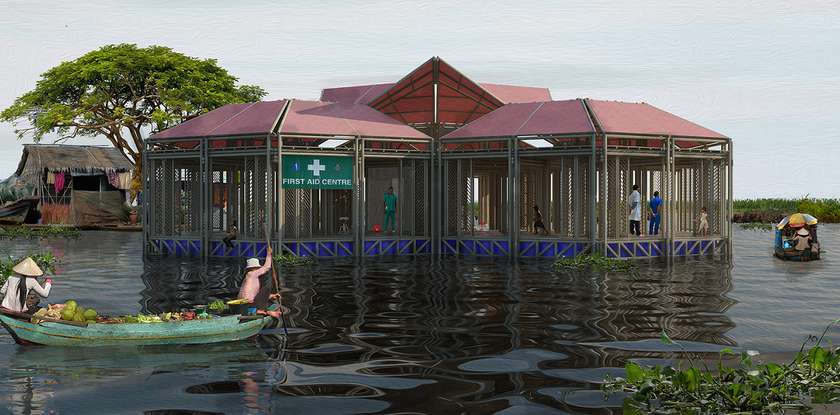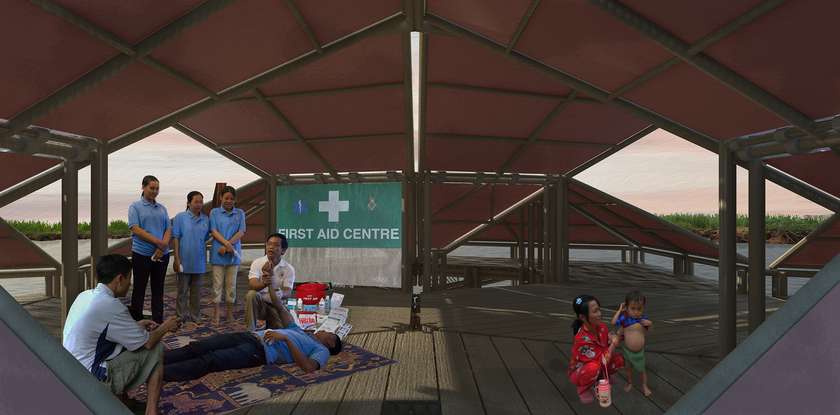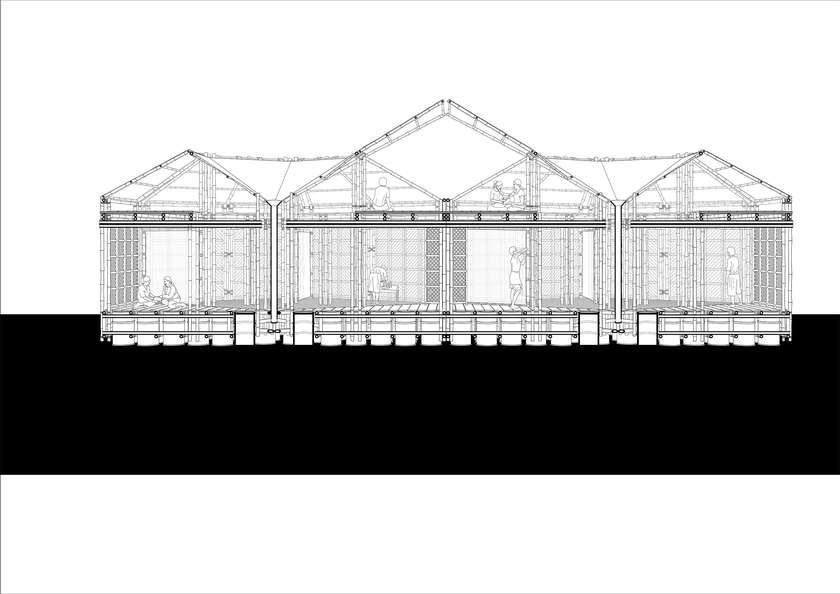Idea by
Marco Moretto, Pinar Sefkatli
Call for ideas 2016
Petek
Petek
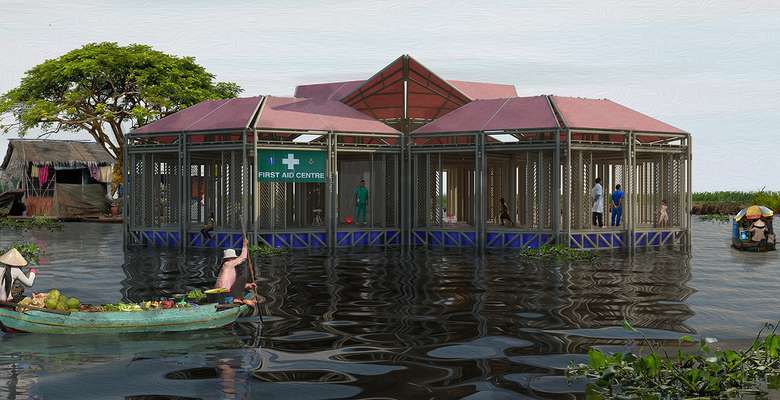
The design is composed by six fragments, it can be produced locally by carpenters and built using low-cost technologies and local materials. The final module can be assembled on the site and it consists of a bamboo base that floats on empty recycled plastic drums, and by a liveable space supported by a bamboo shelter structure. It consists of approximately one hundred square meters and has two floors. The modular design indicates that a single element is completely autonomous, and combination or a cluster of floating modules is able to create a more resilient organism. The module is designed to serve as a front-line health care facility, whilst at the same time being adaptable for other uses, such as a community hub, school, etc. It is designed to use renewable energy, and to harvest rainwater. Its main aim is to generate an ecological, sustainable and modular frame that allows flexibility for adapting based on the specific needs of the local communities of the Tonlé Sap.
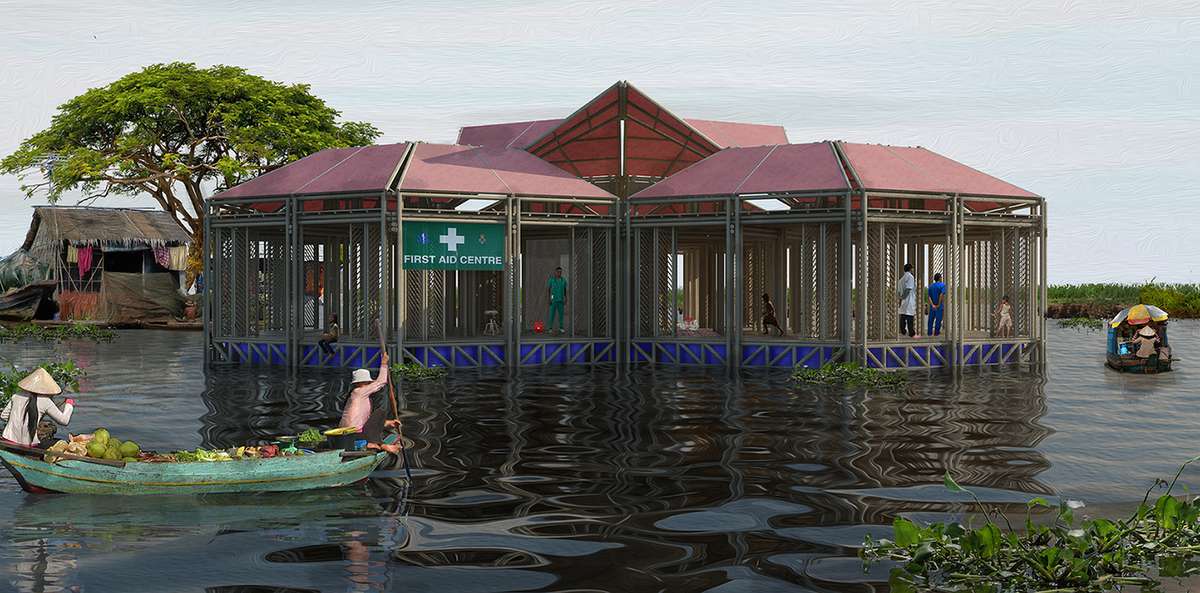
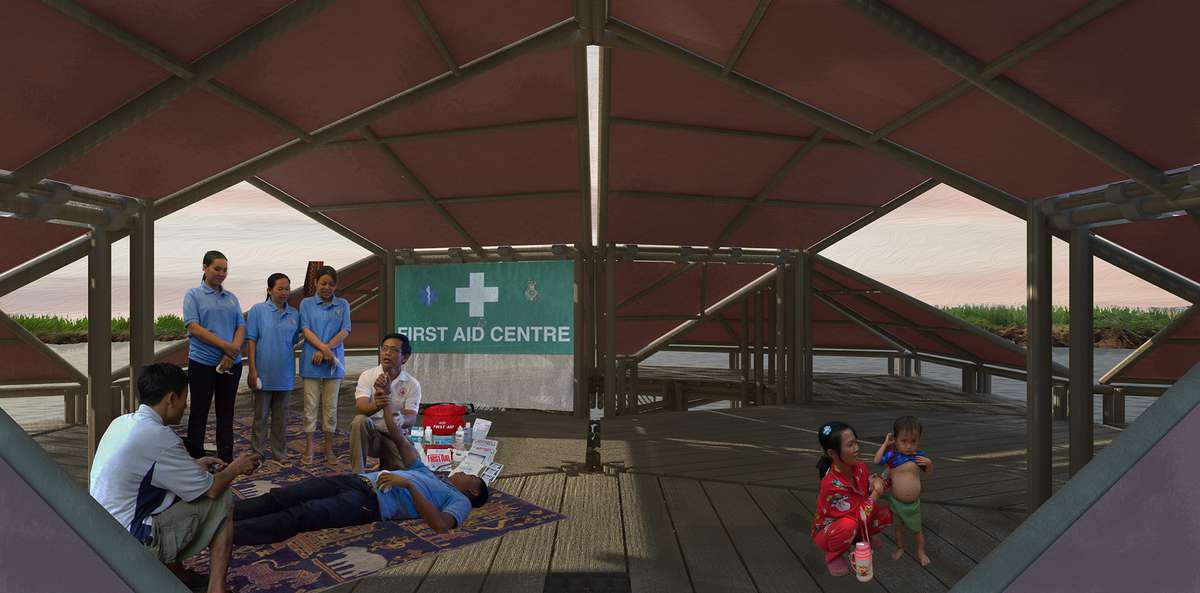
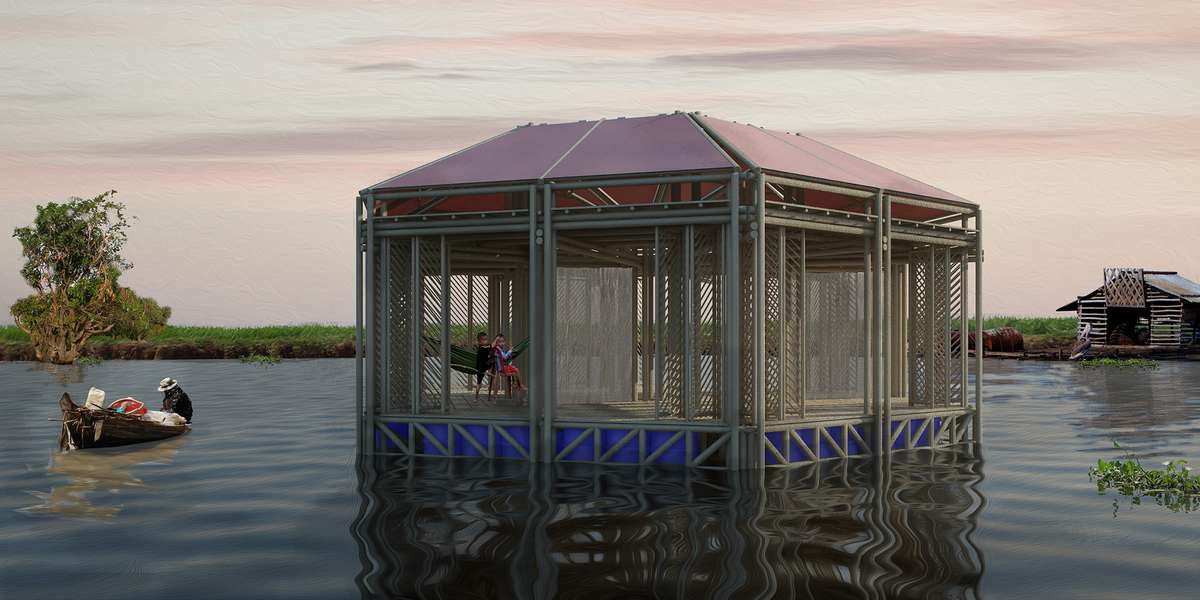
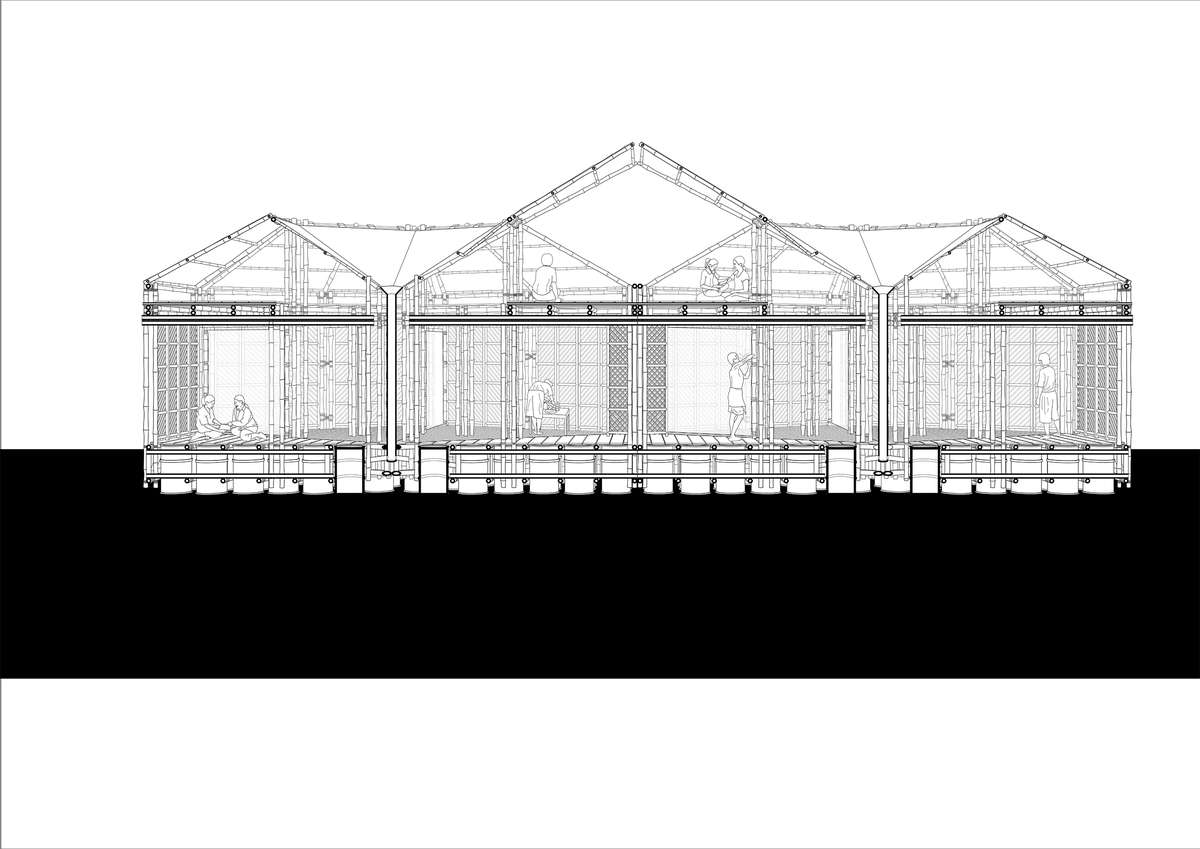
Petek
Petek

The design is composed by six fragments, it can be produced locally by carpenters and built using low-cost technologies and local materials. The final module can be assembled on the site and it consists of a bamboo base that floats on empty recycled plastic drums, and by a liveable space supported by a bamboo shelter structure. It consists of approximately one hundred square meters and has two floors. The modular design indicates that a single element is completely autonomous, and combination or a cluster of floating modules is able to create a more resilient organism. The module is designed to serve as a front-line health care facility, whilst at the same time being adaptable for other uses, such as a community hub, school, etc. It is designed to use renewable energy, and to harvest rainwater. Its main aim is to generate an ecological, sustainable and modular frame that allows flexibility for adapting based on the specific needs of the local communities of the Tonlé Sap.
